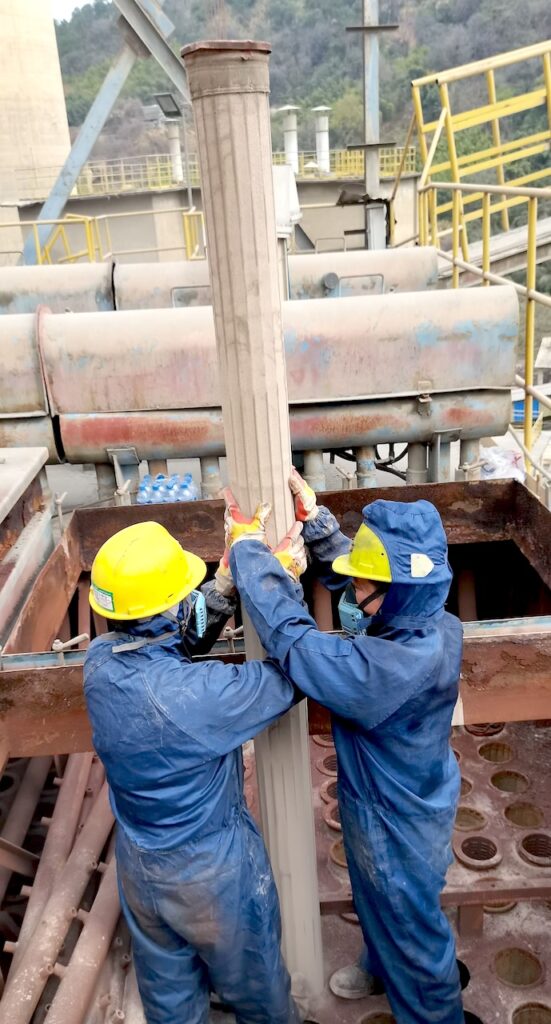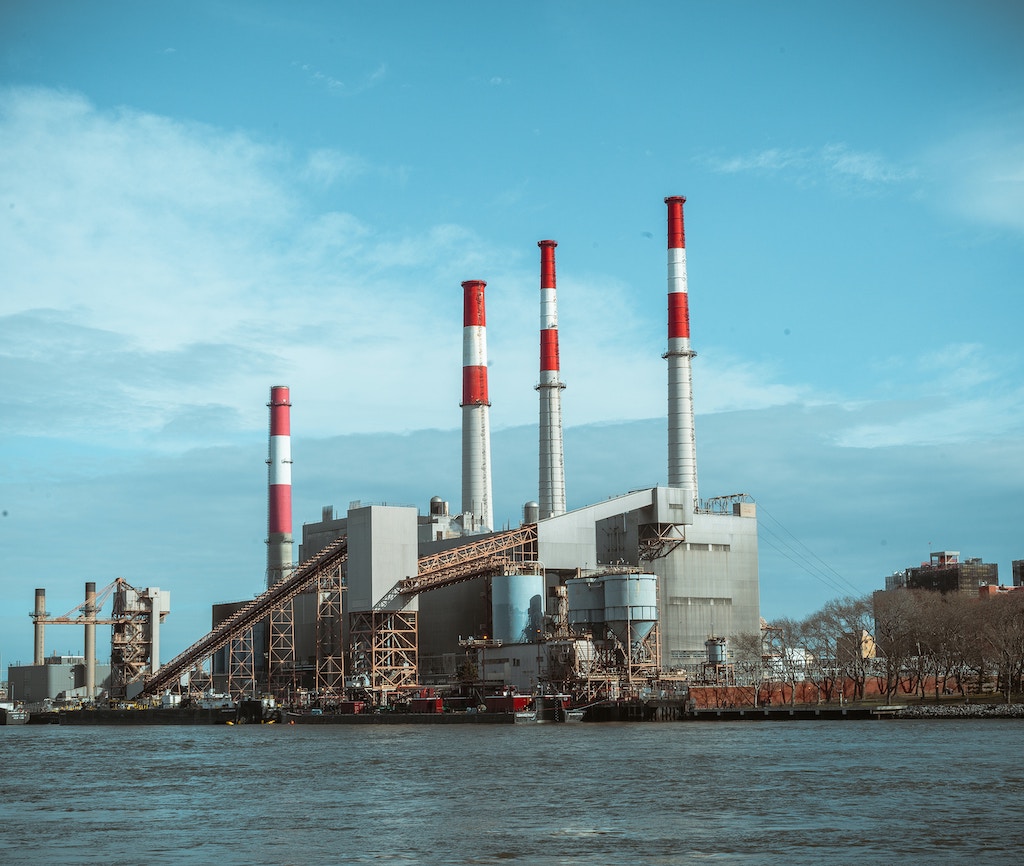Service
We offer comprehensive life cycle support and services to ensure the optimal performance and longevity of your dust collection system. Whether you require free consultation, custom design, production, installation, maintenance, or optimization services, we are committed to providing end-to-end support to our customers.
Our range of services is designed to enhance the reliability and efficiency of your dust collection system. By partnering with us, you can expect the following benefits:
- Increased dust collection efficiency, resulting in improved air quality and reduced environmental impact.
- Extended filter bag life cycle, minimizing the need for frequent replacements and reducing maintenance costs.
- Reduced production and maintenance downtime, ensuring continuous operation and maximizing productivity.
- Lower total cost of ownership, achieved through optimized system performance and reduced operational expenses.
- Compliance with higher dust emission standards, meeting regulatory requirements and ensuring a safe working environment.

FILTER MEDIA
FILTER MEIDA TEST
BAG FAILURE
BAG CHANGE OUT
INSTALLATION
BAGHOUSE INSPECTION
BAGHOUSE OPERATING ANALYSIS
FILTER MEDIA TEST AND ANALYSIS
DiamFilter Media Testing & Analysis offers a comprehensive and meticulous testing and analysis service, specifically designed to discern the characteristics of filter media across four distinct categories:
Physical Characteristics
- Thickness
- Density (weight)
- Abrasion resistance behavior
- Energy absorption behavior
- Tensile strength
Structural Characteristics
- Fabric structure (woven or non-woven, scrim or non-scrim)
- Filter media treatment & membrane
- Fiber structure, and pore size distribution
Chemical Characteristics
- Fiber content
- Acid resistance behavior
- Alkali resistance behavior
- Temperature resistance behavior
- Moist heat resistance behavior
Filtration Characteristics
- Permeability
- Differential pressure behavior
- Gravimetric separation efficiency
- Fractional collection efficiency
- Dust penetration through the filter media
- Dust loading capacity
Service Description
Detecting signs of substandard filter bag performance involves observing indicators such as elevated pressure differentials, heightened airflow resistance, compromised mechanical properties, and undesirable particulate emissions. Conducting a meticulous forensic examination of filter bags can unveil various factors contributing to filtration inefficiencies.
Our Filter Bag Failure Analysis service centers on five primary modes of failure: mechanical weakness, chemical deterioration, thermal degradation, dust penetration (media blinding), and incompatible design. The analysis process entails the following procedures:
Visual Inspection
- Examine the failed bags for visible signs of damage like tears, holes, abrasion, or caking.
- Assess the dust cake build-up and its characteristics (thickness, texture, adhesion).
- Look for evidence of chemical degradation or discoloration.
Sample Collection
Collect representative samples of the failed filter bags, dust cake, and potentially other system components (cages, seals, housing) for further analysis.
Lab Test
The collected samples undergo various analyses depending on the suspected cause of failure. This could involve:
- Physical Property Testing: To assess tensile strength, air permeability, and other filtration parameters.
- Chemical Analysis: To detect chemical degradation or incompatible filter media materials.
- Microscopy Analysis: To identify wear mechanisms, fiber characteristics, and potential contamination.
Data Analysis
Review operational data (pressure drop, flow rate, cleaning cycles) and process conditions to identify potential correlations with the observed failures.
BAG CHANGE-OUT SERVICE
Filter bag change-out is a critical process involving the replacement of used filter bags within a baghouse dust collector system. Typically, this procedure is necessitated by two main factors: firstly, when the filter fabric is compromised, leading to dust leakage due to holes or tears; and secondly, when the filter fabric becomes fully entrained or clogged with dust particles, resulting in a permanent restriction of airflow through the filter bags.
The key objectives of baghouse filter bag change-out are:
Maintain Dust Collection Efficiency: Regular change-out of filter bags ensures optimal dust collection efficiency, preventing fugitive dust emissions and safeguarding air quality.
Prevent Baghouse Damage: Clogged filter bags elevate pressure drop within the baghouse, placing strain on the cleaning system and other components. Timely change-out minimizes pressure drop and safeguards the baghouse from potential damage.
Optimize Energy Consumption: Increased pressure drop necessitates higher energy consumption to operate the baghouse fan. Changing filter bags before significant clogging reduces energy consumption and lowers operating costs.
Ensure Regulatory Compliance: Baghouses are often subject to environmental regulations governing dust emissions control. Regular filter bag change-out aids facilities in complying with these regulations and mitigates the risk of potential fines.
Protect Worker Health and Safety: Exposure to dust poses health risks to workers. Changing filter bags before significant dust leakage occurs maintains workplace safety and safeguards employee well-being.
The frequency of baghouse filter bag change-out is influenced by various factors, including:
- Dust Loading: Heavier dust loads require more frequent change-out.
- Filter Bag Material: Different materials possess varying dust holding capacities and cleaning efficiencies.
- Cleaning System Type and Effectiveness: More efficient cleaning systems can prolong filter bag life.
- Operational Requirements: Certain applications necessitate near-zero dust emissions, prompting more frequent change-out.
Monitoring differential pressure readings and visually inspecting filter bags aid in determining the optimal timing for change-out. Adhering to a regular and proper baghouse filter bag change-out schedule ensures optimal dust collection performance, equipment protection, and maintains a safe and compliant operation.
As a general guideline, it is preferable to change out all filter bags simultaneously rather than a few at a time. Airflow typically follows the path of least resistance, and new filter bags may quickly wear out while bearing the brunt of filtration work in a baghouse
BAGHOUSE OPERATING ANALYSIS

We understand the critical importance of maintaining optimal performance in dust collection systems across various industries. To ensure that your dust collection system operates at peak efficiency and meets or exceeds emission standards and regulations, it is essential to conduct a comprehensive analysis of its operating conditions. Our Baghouse Operating Analysis Service is designed to identify and address potential issues that may arise, including:
Dust Properties:
Careful evaluation of dust properties such as particle size, density, distribution, chemistry, physical characteristics (including corrosion and abrasion resistance), temperature, moisture content, and combustibility is essential to select the most suitable dust collection systems and filter media for your specific application.
Dust Air Volume
Accurate measurement of dust collector volume in cubic feet per minute (CFM) is crucial to ensure effective dust capture without compromising production or air quality. Incorrect air volume can lead to inefficiencies and increased energy consumption costs.
Air-to-Cloth Ratio
The air-to-cloth ratio, which measures the amount of air passing through one square foot of filter media, is a critical parameter for efficient dust collection system performance. Operating at an optimal air-to-cloth ratio ensures effective filtration while minimizing filter bag wear and maintenance downtime.
Cleaning System Parameters:
Monitoring and optimizing cleaning air pressure, pulse duration, and frequency of cleaning cycles are essential to maximize the efficiency of the cleaning process and extend filter life.
Filter Media Selection:
Incorrect selection of filter media or improper filter bag cleaning can lead to reduced filtration efficiency, increased energy consumption, and potential equipment breakdowns. Our analysis service helps ensure the proper selection and maintenance of filter media to optimize performance and prevent costly issues.
By conducting a thorough Baghouse Operating Conditions Analysis, we can identify potential problems and implement corrective measures to improve the efficiency and effectiveness of your baghouse operation. This proactive approach not only reduces emissions and enhances air quality but also offers additional benefits such as extending filter bag lifespan, reducing energy consumption, improving overall filtration efficiency, preventing costly breakdowns, and ensuring environmental compliance.


